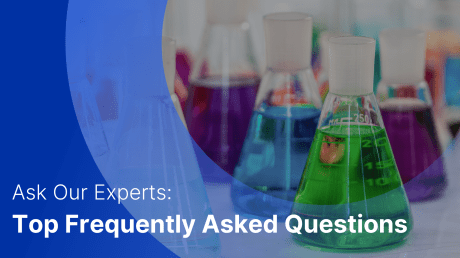
Our Top 3 Takeaways on the Current State of Global Product Safety from ICPHSO 2023

The International Consumer Product Health and Safety Organization (ICPHSO) Annual Meeting & Training Symposium took place on February 20 – 24 in Orlando, Florida, marking the 30 year anniversary of the global product safety organization. The event brings together product safety stakeholders from varying backgrounds – manufacturers, regulators, consumers, lawyers & more and provides an opportunity to learn and share knowledge in the product safety space. The four day event was packed with sessions focused on themes such as emerging hazards, best practices, technology, risk assessment and supply chain. From the wealth of information shared my top three takeaways were as follows.
1. The Complexity of Modern Day Products
A connected or IOT product is far more complex than its traditional ancestor, potentially giving rise to a convergence of issues if something goes wrong with the product. Take the example given by James Dickerson, Chief Scientific Officer at Consumer Reports, in the breakout session on Rebooting Product Safety, of a smart microwave being hacked and put on for 25 hours.
Previously, the only issue to be considered with a microwave would have been whether it was safe or not. However, in today’s world, smart microwaves or other smart products can throw up additional issues on top of product safety, such as data security (ensuring your data is not subjected to unauthorized access) and data privacy (your information is viewed and used in the manner you have agreed to) and the conflation of these issues can cause confusion when it comes to who is at fault and where liability lies.
This theme also seeped into the fascinating session on Who Has the Ball?, where speakers from the different regulators (Federal Trade Commission (FTC), National Highway Traffic Administration (NHTA) and Food and Drug Administration (FDA)), discussed when something goes wrong with a product – whose jurisdiction does it fall under, and which agency is responsible for issuing the product recall?
The recent M3GAN movie was presented as an example – a robotics engineer at a toy company builds a life-like doll called Model Three Generative Android Robotics (AKA M3GAN), that begins to take on a life of its own. Fortunately, while the risks that products can pose may not be as far along as those presented in M3GAN, they are far more onerous and complex than they previously were.
2. The Challenges Posed by the Digital Revolution
The way we communicate, access information and shop has been transformed, and we have moved firmly into the digital age – hastened by the pandemic. With the many benefits also come challenges such as trade in illegal goods, manipulative algorithms, ability to sell into countries with potentially less responsibility, and more.
The digital revolution was an area of concern flagged by several regulators across the globe when asked what keeps them awake at night by Karin Athanas, Executive Director, TIC, in the Plenary High Level Global Regulator Session.

Representing Compliance & Risks at the symposium (L-R): Beth McCalister, Maria Marecki, Cassandra Pershyn, Jason Dallhoff, Louise Forrest & Orlaith Morris
Commissioner for Justice in the European Commission, Didier Reynders answered it is the Digital Transition we are living in, and reflected that with the pandemic, more and more people have moved their lives online. This is reflected in why the EU is working on the Digital Services Act and the General Product Safety Regulation.
Alexander Hoehn-Saric, Chair of U.S. Consumer Product Safety Commission, emphasized how there needs to be a level playing field when it comes to doing business online. Sarah Smith, OBE, Deputy Chief Executive, Office for Product Safety and Standards, echoed his comments stating consumers should have the same protections whether they shop online or on the British high street.
Similar sentiments were made by regulators from Canada and Australia, Dennis Price, Director General of the Consumer and Hazardous Product Safety Directorate, Health Canada and Neville Matthew of the Australian Competition and Consumer Commission respectively.
3. The Competing Priorities of Sustainability & Product Safety
The production and consumption of products has significant environmental and climate impacts and this is being responded to by regulators with initiatives such as the EU’s proposed eco-design for sustainable products regulation. In tandem, the consumer’s appetite for more sustainable products continues to grow unabated. Our experts dug deeper into the topic of sustainability, and conducted a Year in Review for ESG.

Louise Forrest, Boaz Green, Miran Bahra and Rick Horwitch speaking on The Intersection of Product Safety, Sustainability & ESG Reporting
An interesting point which arose across a number of sessions is how safety must not be compromised in the pursuit of sustainability, however noble and important that cause is.
An example was given by Chelsea Murtha, Director of Sustainability, AAFA, of how the chemical BPA has been found, on occasions, in textiles made from recycled polyester in the final plenary session on Keeping Consumers Safe in a Sustainable World.
This Joint OECD-ICPHSO, a first of-its-kind collaboration session, considered how in the wake of a growing number of domestic, regional and international initiatives to foster sustainable consumption, product safety should not be an after-thought, and should be carefully balanced with the objective of making products more durable, recyclable, and repairable.
Final Word
What is clear from the above, and the overall general consensus from the conference, is that product regulation remains complex and evolving. It continues to remain under pressure to keep up with the technological advancements in the products we use, and in the way we do business, as well as striving to encourage more sustainable products without sacrificing the safety of the product.
Sign Up To Our Newsletter
Join 30,000+ compliance professionals for updates on hot compliance issues and more!








